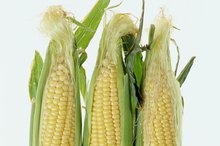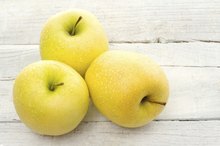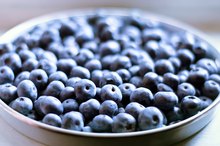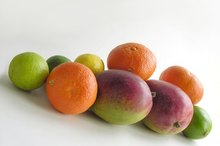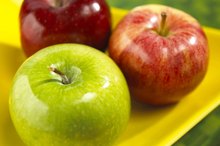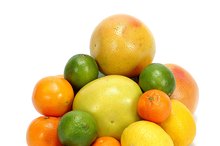What does fact checked mean?
At Healthfully, we strive to deliver objective content that is accurate and up-to-date. Our team periodically reviews articles in order to ensure content quality. The sources cited below consist of evidence from peer-reviewed journals, prominent medical organizations, academic associations, and government data.
- Harvard School of Public Health: The Nutrition Source: Vegetables and Fruits: Get Plenty Every Day
- Harvard Medical School Family Health Guide; Added Sweeteners; December 2006
- Oregon State University’s Linus Pauling Institute; Why Apples Are Healthful; Silvina Lotito, Ph.D.; November 2004
The information contained on this site is for informational purposes only, and should not be used as a substitute for the advice of a professional health care provider. Please check with the appropriate physician regarding health questions and concerns. Although we strive to deliver accurate and up-to-date information, no guarantee to that effect is made.
Fructose in Apples
Apples contain the three "F's" -- fiber, flavonoids and fructose. All three have their benefits, but when it comes to fructose, it is possible to have too much of a good thing. According to Harvard School of Public Health, eating no more than 2 cups of raw apples per day will keep your fructose intake in check.
What Is Fructose?
Also known as a fruit sugar, fructose is the sweetest of all natural sugars. Despite the sweet factor, fructose has a low glycemic index. Naturally found in fruit along with glucose and sucrose, fructose is also naturally occurring in honey and some vegetables, according to the University of Florida IFAS Extension. Fructose is also a component in high-fructose corn syrups commonly used to sweeten beverages and processed foods such as breakfast cereals and condiments.
- Also known as a fruit sugar, fructose is the sweetest of all natural sugars.
Fructose in Apples
Apple Varieties With Less Sugar
Learn More
The amount of fructose in an apple depends on its size. A single, medium-sized, raw apple -- approximately 3 inches in diameter -- contains approximately 11 grams of fructose. A small apple, at 2 and three-quarter inches in diameter, contains 9 grams of fructose, while a large apple -- 3 and one-quarter inches in diameter -- contains 13 grams.
Misconceptions
Compared to candy or a can of soda, a fructose-filled apple seems like the better choice. But the University of Florida News explains that fructose is fructose no matter what the source. Fructose is a monosaccharide, or simple sugar, usually broken down and absorbed quickly by the body. Fiber in the apple helps slow down the fructose absorption -- to an extent. While eating one apple may not be a problem, eating several apples at a time may cause a sudden spike in blood sugar levels.
- Compared to candy or a can of soda, a fructose-filled apple seems like the better choice.
- But the University of Florida News explains that fructose is fructose no matter what the source.
Metabolization
Dangers of Erythritol
Learn More
When you eat an apple, most of the fructose that you consume enters the liver where liver enzymes carry out metabolization, according to the Harvard Medical School Family Health Guide 2. The body does not use fructose as a source of energy, so any apple fructose metabolized by the liver immediately turns to unhealthy body fats such as triglycerides and fatty acids. Excess amounts of body fat can lead to serious heart-related conditions.
Fructose Benefits
The health benefits of apples may far outweigh negative fructose concerns. Silvina Lotito, Ph.D., of Oregon State University’s Linus Pauling Institute explains that apples contain flavonoids that may reduce the risk of acquiring certain cancers and chronic diseases 3. In addition, ingesting apple fructose increases plasma uric acid levels in the body. This increase in uric acid shares a common link to rises in plasma antioxidant capacity. High levels of uric acid can aid in the battle against inflammatory conditions.
- The health benefits of apples may far outweigh negative fructose concerns.
- In addition, ingesting apple fructose increases plasma uric acid levels in the body.
Related Articles
References
- Harvard School of Public Health: The Nutrition Source: Vegetables and Fruits: Get Plenty Every Day
- Harvard Medical School Family Health Guide; Added Sweeteners; December 2006
- Oregon State University’s Linus Pauling Institute; Why Apples Are Healthful; Silvina Lotito, Ph.D.; November 2004
- USDA National Nutrient Database: Apples, Raw, With Skin
- Popkin BM, Hawkes C. Sweetening of the global diet, particularly beverages: patterns, trends, and policy responses. Lancet Diabetes Endocrinol. 2015;4(2):174-186. doi:10.1016/S2213-8587(15)00419-2
- New Hampshire Department of Health and Human Services. How much sugar do you eat?. Updated August 2014.
- DeSilver D. How America's diet has changed over time. Pew Research Center. Updated December 13, 2016.
- Lakhan SE, Kirchgessner A. The emerging role of dietary fructose in obesity and cognitive decline. Nutr J. 2013;12:114. doi:10.1186/1475-2891-12-114
- Djiogue S, Nwabo Kamdje AH, Vecchio L, et al. Insulin resistance and cancer: the role of insulin and IGFs. Endocr Relat Cancer. 2013;20(1):R1-R17. doi:10.1530/ERC-12-0324
- Page KA, Chan O, Arora J, et al. Effects of fructose vs glucose on regional cerebral blood flow in brain regions involved with appetite and reward pathways. JAMA. 2013;309(1):63-70. doi:10.1001/jama.2012.116975
- Goran MI, Ulijaszek SJ, Ventura EE. High fructose corn syrup and diabetes prevalence: a global perspective. Glob Public Health. 2013;8(1):55-64. doi:10.1080/17441692.2012.736257
- Walker RW, Dumke KA, Goran MI. Fructose content in popular beverages made with and without high-fructose corn syrup. Nutrition. 2014;30(7-8):928-35. doi:10.1016/j.nut.2014.04.003
- American Heart Association. Added sugars. Updated April 17, 2018.
Writer Bio
Jonae Fredericks started writing in 2007. She also has a background as a licensed cosmetologist and certified skin-care specialist. Jonae Fredericks is a certified paraeducator, presently working in the public education system.


